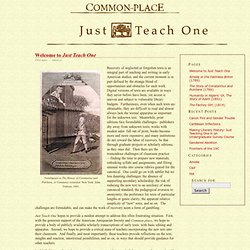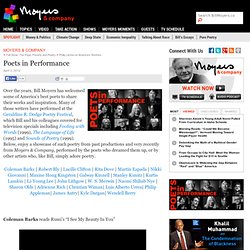

The%20Hangman Full%20Text%20and%20TPCASTT. An Exhibit on the Restoration of the Cemetery at Rohwer Relocation Center. The Japanese American Experience in WWII Arkansas. What America’s immigrants looked like when they arrived on Ellis Island. We hear so often that America is "a nation of immigrants" or a "cultural mixing pot" that the phrase has become kind of a tired cliche.

But actually seeing that history is a different story. The fascinating photographs below -- of people in their native costume passing through Ellis Island in the early 20th Century -- hint at just how incredible and unique America's history is as a nation of immigrants. These photos were taken by Augustus Sherman, an amateur photographer who worked as the chief registry clerk on Ellis Island from 1892 until 1925. Sherman snapped these photographs of people passing through customs in their native costume. They were published in National Geographic in 1907 and once hung on the walls in the headquarters of the federal Immigration Service in Manhattan, according to the Public Domain Review.
The history of the island is not always a happy one: It also reflects deep racism and ethnic divisions. A German stowaway. Children and women from the Netherlands: 19 Reasons Latin Americans Come To The U.S. That Have Nothing To Do With The American Dream. The conventional wisdom says that most Latin American migrants who come to the United States are looking for a better life, inspired by the "American Dream.

" And it's hard to deny that there's a lot of truth in that. But there's another side to the story -- people leave Latin America because life there can be very hard. Poverty, political instability and recurring financial crises often conspire to make Latin American life more challenging than in the U.S., a wealthy country with lots of job opportunities. Living on the northern side of the U.S. -Mexico border, it's easy to view Latin America as another world, isolated from the United States. Here are 19 ways the U.S. government has helped spur immigration by making life harder in Latin America. Took over almost half of Mexico Colonized Puerto Rico in 1898 A member of the U.S. Video: Episode 1: Foreigners in Their Own Land.
A personalized PBS video experience is only a few clicks away.

Use one of the services below to sign-in to PBS, and you'll be able to manage videos in your Watchlist, keep track of your favorite shows, watch PBS in high definition, and much more! You've just tried to add this video to your Watchlist so you can watch it later. But first, we need you to sign-in to PBS using one of the services below. You’ll be able to manage videos in your Watchlist, keep track of your favorite shows, watch PBS in high definition, and much more! You've just tried to select this program as one of your favorites. To get you watching PBS in high definition we need you to sign-in to PBS using one of the services below.
You'll be able to manage videos in your Watchlist, keep track of your favorite shows, watch PBS in high definition, and much more! We have updated our registration process. Just Teach One. Frontispiece to The History of Constantius and Pulchera, or Constancy rewarded.

New York: John Tiebout, 1801. Recovery of neglected or forgotten texts is an integral part of teaching and writing in early American studies, and the current moment is in part defined by the strange blend of opportunities and obstacles for such work. Digital versions of texts are available in ways they never before have been, yet access is uneven and subject to vulnerable library budgets. Furthermore, even when such texts are obtainable, they are difficult to read and almost always lack the textual apparatus so important for the unknown text. Meanwhile, print editions face formidable challenges—publishers shy away from unknown texts; works with modest sales fall out of print; books become more and more expensive; and many institutions do not reward the labor of recovery, be that through graduate projects or scholarly editions, as they once did.
& Ed White (Tulane University) ewhite9@tulane.edu.
Poets in Performance. Over the years, Bill Moyers has welcomed some of America’s best poets to share their works and inspiration.

Many of those writers have performed at the Geraldine R. Dodge Poetry Festival, which Bill and his colleagues covered for television specials including Fooling with Words (1999), The Language of Life (1995) and Sounds of Poetry (1999). Below, enjoy a showcase of such poetry from past productions and very recently from Moyers & Company, performed by the poets who dreamed them up, or by other artists who, like Bill, simply adore poetry. Coleman Barks | Robert Bly | Lucille Clifton | Rita Dove | Martín Espada | Nikki Giovanni | Maxine Hong Kingston | Galway Kinnell | Stanley Kunitz | Kurtis Lamkin | Li-Young Lee | John Lithgow | W. S. Coleman Barks reads Rumi’s “I See My Beauty In You” Watch this full episode from Fooling with Words Robert Bly reads “After Drinking All Night With a Friend, We Go Out in a Boat at Dawn to See Who Can Write the Best Poem“ Rita Dove reads “Daystar”